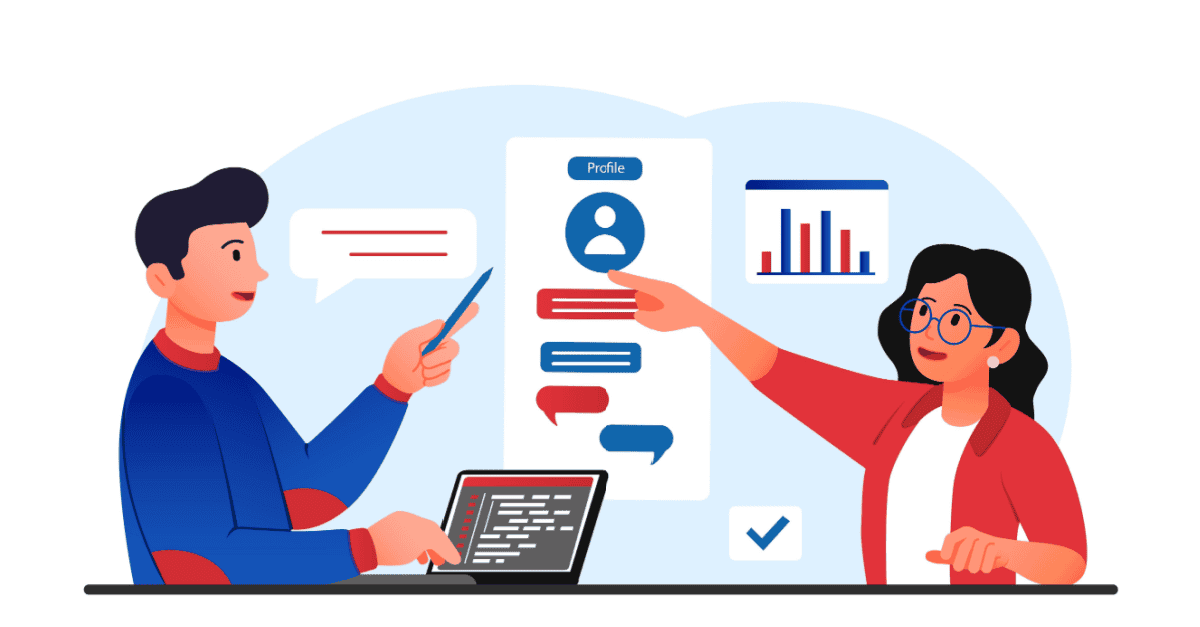
Selling to Modern Buyers Through Digital Transformation
Written By: Wesley Burger
How Digital Transformation Drives the Customer Experience
Digital transformation refers to the changes companies must undergo in order to adapt their business to new technologies, consumer preferences, and behaviors. This change is unavoidable. Here’s how you can set your team up for success in the world of digital business.
Technology has changed customer service dramatically. And it will continue to do so over the coming years. In fact, a study by IDC shows that:
- Two-thirds of the CEOs of Global 2,000 companies will shift their focus to more modern digital strategies to improve the customer experience before the end of the year.
- 34% of companies believe they’ll fully adopt digital transformation within 12 months or less.
- The net global spending on digital transformation is expected to increase to more than $2 trillion by 2022.
- 79% of companies admit that COVID-19 increased the budget for digital transformation.
- 55% of businesses believe they have less than a year before they start to suffer financially and lose market share.
The New Consumer Landscape
Today, it’s more convenient than ever for consumers to research their options, learn about different brands, and make purchases all from the comfort of their own homes. And in actuality, consumers have the capability to make purchases from wherever they are and whenever they want/need.
Your customers expect relevant content in relation to what they’re doing anytime, anywhere, and in the format and on the device of their choosing. Their journey dictates your strategy.
The channels through which most businesses operate and interact with customers are totally different from what they were ten or fifteen years ago. Most changes have been for the better, and it’s crucial for you, as a business owner/manager/executive, to adapt to your customers’ digital transformation by transforming your customer experience into a comprehensive and personalized digital experience.
This customer-driven digital transformation means your business must embrace technology to deliver an unmatched customer experience.
Let’s start by understanding what Digital Transformation means.
What is Digital Transformation?
The term digital transformation refers to the changes and adaptations companies must undergo in order to adapt their business to new technologies, but especially to new consumer preferences and behaviors.
This change is unavoidable. Your business has to adopt new technologies and trends and integrate that change into all areas of your business to achieve fundamental changes in operations. This translates into delivering value to your customers through a consistent experience, whenever and wherever they need it.
The good news is that when your company does transform digitally, you’ll create a community of highly engaged customers, meaning they’re:
- Six times more likely to try a new product or service from their preferred brand.
- Four times more likely to refer your brand to their friends, family, and connections.
- Two times more likely to make a purchase with their preferred brand, even when a competitor has a better product or price.
Plus, they’ll buy 90% more frequently, spend 60% more per purchase, and have 3x the annual value (compared to the average customer). What this means is that companies that have embraced digital transformation are 26% more profitable than their peers!
A crucial aspect of digital transformation is to understand your customers and their ever-changing needs and wants.
Understanding the New Digital Customer
Modern technology has transformed consumer habits. Today’s modern buyer is constantly connected, app-native, and aware of what he or she can do with technology. Because of this, customers often rate organizations on their digital customer experience first.
Digital-first means two things: the customer is in the driver’s seat, and you must rethink the way you interact with them. Mobile devices, apps, machine learning, automation, and much more allow customers to get what they want almost instantly.
What does “Digital-First” mean for You?
B2B Sales needs to evolve into social selling. Your customers and prospects are already active on social media. You need to be present in a relevant way by nurturing a relationship with them through being helpful, educational, and valuable. Share your expertise with them through timely, relevant, and useful content.
Your marketing team needs to embrace digital, data-driven strategies in order to provide your audience with highly targeted messages. This is expected by your customers, so create a comprehensive strategy that uses digital channels to implement search engine marketing, account-based marketing, and email marketing strategies.
Customer service in your company needs to build an ecosystem where your customers are able to find the help and support they need anytime and through a wide variety of channels that include social media, reviews sites, forums, communities, chat (both live and bots), email, etc. Be proactive in the way you help your customers instead of reactive.
New Capabilities for Customer Services
You must be thinking digital-first by now. This perspective will allow you to lead your team into implementing new capabilities to offer your customers a better customer support experience.
These new competences will allow you to accommodate the new, modern-day buyer, and they include:
- Omni-channel customer interactions to provide a seamless multi-channel experience
- Servicing connected devices for a more efficient and effective maintenance approach
- Creating loyalty through customer service by providing more value
- Nurturing customer communities through sharing of useful and educational information
- Engaging user experiences that puts the customer first and understand their needs.
- Make information available online to nurture your customer and prospect community
- Embrace automation to help your staff with their jobs and to ensure timely communications with your prospects.
- An agile, flexible IT environment that adapts to changes quickly and supports your customers’ various platforms.
- Tailor content to individual users to ensure personalized customer experiences
- Learn about your customers and focus on providing value
The digital transformation your company is going or must go through is driven by humans, your customers.
However, their behavior does change and adapt according to new technologies. It’s your duty to stay updated. Remember that you can be digitally transformed, but you can never stop your company’s digital evolution.
Leverage virtual selling to accelerate the speed of sales and increase productivity and download our FREE guide, Virtual Selling Video Sales Call Check List.
About the author
Wesley Burger
Wesley Burger is the Marketing Director at CloudTask, a managed workforce provider for growing…
Get FREE Sales Training Delivered to Your Inbox
Join more than 360,000 professionals who get our weekly newsletter.
Related Articles

Learn Online
Self-paced courses from the
world's top sales experts

Virtual Training
Live, interactive instruction in small
groups with master trainers

Coaching
One-to-one personalized coaching
focused on your unique situation






